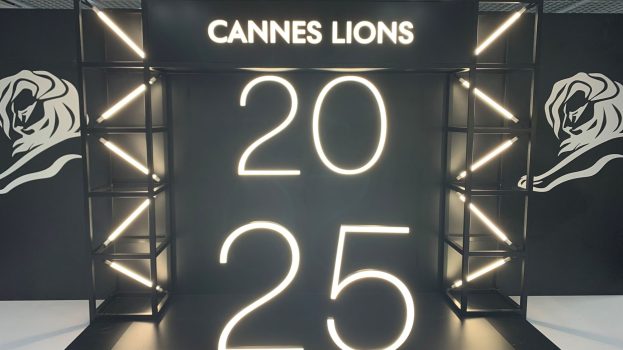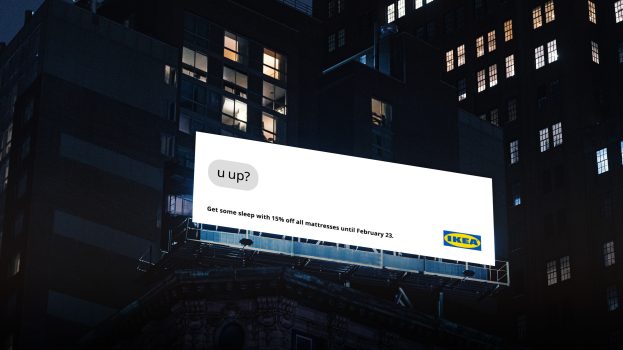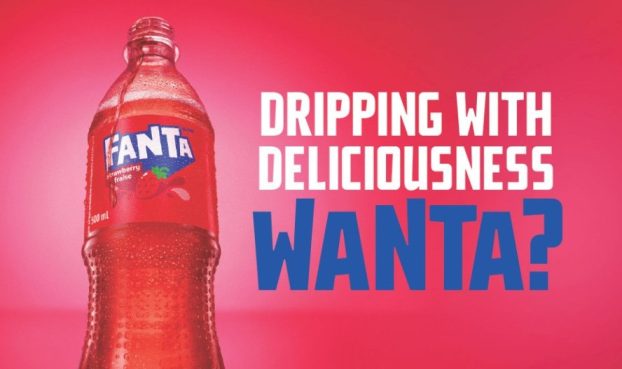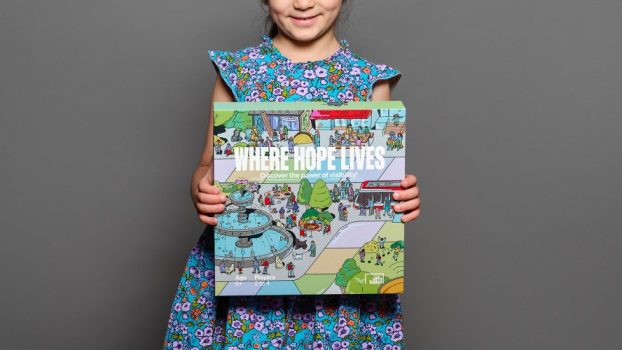In 1991 when the Canadian teen drama Degrassi High ended with the made-for-TV movie School’s Out, the show’s co-creator and executive producer Linda Schuyler felt that over the preceding decade they had told all the teen stories they could – they were tapped out.
Fast forward to present day and Schuyler sits in her corner office at Epitome Pictures (which she helms as CEO, along with her husband, president Stephen Stohn), watching several TV monitors as the new Degrassi cast films a scene in a gym set a few yards away.
“They sometimes forget we can see them,” she says with a smirk, hinting at the mischief the young cast no doubt occasionally gets into.
It’s been 30 years since Degrassi first appeared on TV sets in the form of The Kids on Degrassi Street, then Degrassi Junior High and Degrassi High (all of which Schuyler co-created with Kit Hood and the production company Playing With Time). Airing throughout the ’80s, Degrassi made waves by covering controversial subjects other teen shows wouldn’t touch, like teenage pregnancy, suicide, AIDS and abortion.
It was resurrected in 2001 with Degrassi: The Next Generation, which was no less controversial than the original. In fact, both versions of the series aired episodes on abortion, and while the classic version’s was edited south of the border, the Next Generation episode was banned altogether, causing much fan chagrin and media attention. The episode was finally aired in the U.S. a few seasons later. Degrassi has since been the first series to show a gay teen kiss, and more recently a teenaged transgendered character.
After the “classic Degrassi” (as they call it) ended, Schuyler took several years off from the adolescent world to work on the short-lived Canadian soap opera Riverdale, but then started developing a new teen series with her Degrassi writing partner Yan Moore. They quickly realized that original Degrassi character Spike’s daughter would now be the appropriate age for junior high. Instead of coming up with a new name for the series, they decided to revive the original. Schuyler and co also realized that the world had changed dramatically since the classic Degrassi ended, and there was a whole new slate of stories to tell.
Debuting on CTV in 2001 and targeting youth 12 to 24 (but attracting an audience into their 30s), Degrassi: The Next Generation was made with the same core principles as the classic version: be fearless with the subject matter, always tell the story from the adolescent perspective, keep the casting age-appropriate (you won’t find 27-year-olds playing teens here), and reassure young people that they aren’t alone in whatever issues they’re dealing with.
Setting Degrassi: TNG apart on the teen series landscape was its ties to the online world right out of the gate. Before it became commonplace for a TV show to have a strong online presence, Epitome realized that this was where its young viewers were spending more and more of their time. Degrassi: TNG debuted with an online strategy that turned it from simply a TV show into a community.
“What we created when we launched TNG was actually a closed environment that was really Facebook, [which] didn’t exist then,” says Schuyler.
This environment was one where visitors could create profiles, interact with each other and have access to web-exclusive extras. Over the years, Degrassi also experimented with other web-based initiatives, from “manga-sodes” – animated episodes made in the style of the popular Japanese manga comics – and webisodes with the cast, to 3D environments and a “Degrassify yourself” contest where kids could upload pics of themselves next to characters they’d be friends with. As Stephanie Cohen, VP communications and marketing at Epitome, notes, some ventures were more successful than others, but their philosophy has always been to continue treading new territory.
“That’s the strength of the brand,” says Cohen. “We’re constantly moving forward and not resting on ‘we did a great job in junior high’ – you can’t just leave it there.”
And with the recent social media and mobile explosions, they continue to plow ahead. Six months ago, Epitome added a team member responsible exclusively for digital and emerging media. The brand is active on Facebook (over 1.2 million fans “like” Degrassi) and Twitter – with accounts for many of the show’s stars as well as for the fictional characters they play.
“We’re developing a mobile app (to launch this month) and working for the first time with both broadcasters in creating a much stronger brand in the digital world,” says Cohen.
The two broadcasters Cohen is referring to are TeenNick, which runs the show in the U.S., and MuchMusic, which now exclusively runs the show in Canada after it switched over from CTV this past summer.
The switch came about when TeenNick approached Epitome with an unusual request. Instead of the typical 22-episode order, the youth channel requested 48 episodes of Degrassi – 24 to run over the summer in a four-times-a-week, six-week-long telenovella format. The other 24 would begin in the fall and run as a regular season. CTV couldn’t house that many episodes in a summer, so talks began to move the show exclusively over to Much (which had been a second window, airing episodes of Degrassi with viewer success). This summer they aired the telenovella episodes simultaneously in Canada and the U.S. – and will continue to air them at the same time going forward.
“As the keeper of the franchise, there was part of me that was nervous about telling so much story in one year – that we might just implode,” says Schuyler, but, she says, the experiment has been a success, exceeding audience expectations on the networks.
“It’s been the number one series in the history of MuchMusic,” says Brad Schwartz, SVP and GM at Much MTV Group, noting that Degrassi and Much are a perfect fit since they’re both “powerful youth brands.”
The move to a youth-specific channel has also opened up marketing opportunities for Degrassi (as it is now called, having dropped the “Next Generation”), bringing it to the streets – literally. Because Degrassi is Toronto-based, Much has been able to leverage the cast to promote the show, having them appear on-air with Much VJs, and at events like the MMVAs in June and at a special screening party for fans when the summer season kicked off with the movie special Degrassi Takes Manhattan. Much’s big marketing push, which also included everything from TSA ads to TV spots to a constant stream of new website content, has clearly paid off.
“It was our number one priority,” says Schwartz of promoting the show. “We had the entire MuchMusic team completely focused and dedicated to it.”
You might say that Degrassi has managed to become a household name despite itself. Its authentic and topical teen focus, often heavy subject matter, and its lack of the typical flurry of merchandise associated with youth shows are all factors that could work against a series like this having such longevity. Yet those are also the factors that have contributed to its success. Cohen says she is very protective of the brand – you won’t find much merchandise out there with the Degrassi logo, and when it does pair with another brand, it’s often with much thought and consideration for what fits the Degrassi identity, for example, the show’s involvement with the Canadian youth charity Free the Children. While there has been some brand integration through the networks (for example, Sony Ericsson sponsored a Much contest to win a walk-on role on the show), “any product placement you see, I would say 99% is just to make the environment authentic,” says Cohen. “We’ll have Coke beside Pepsi, there’s no exclusivity at all.”
While the success in North America has been noteworthy, Degrassi’s success abroad has been staggering. Distributed by U.S.-based Echo Bridge Entertainment, the show is now broadcast in over 150 countries. That level of success is more typical for evergreen animated (and easily dubbed) fare than a teen live-action series with often-controversial subject matter.
“It doesn’t matter where you come from, school is a common experience,” says Schuyler. “Certainly when we set out to make the show, we didn’t say, ‘let’s hope this is going to work well in Germany,’ or ‘let’s hope this is going to work well in Australia.’ We said, ‘we’re dealing with a North American audience, we want to be as authentic as we can for that audience.’ Fortunately it turned out that it had universal appeal, but it wasn’t a primary driver, it was a secondary, wonderful spinoff.”
After 30 years of Degrassi, Schuyler has learned not to predict what the future will hold for the brand. “When we came back with The Next Generation, I thought it would be fantastic if we could get five years out of it, and five has turned into six, into seven and now into 10,” she says. “There’s a limited number of themes you can pursue, but the amount of stories seem to be limitless because you can approach the same theme through a different character and a different set of circumstances…So I don’t think I’ll be in the situation that I was at the end of the classic show where I thought, we’re dried up, we’re done. My feeling is, as long as the broadcasters want us, we’re here.”
Jump to:
Brands of the Year 2010 intro
A&W cooks up nostalgia
Koodo makes a knockout entrance
Mark’s knows what works
TIFF takes the spotlight























